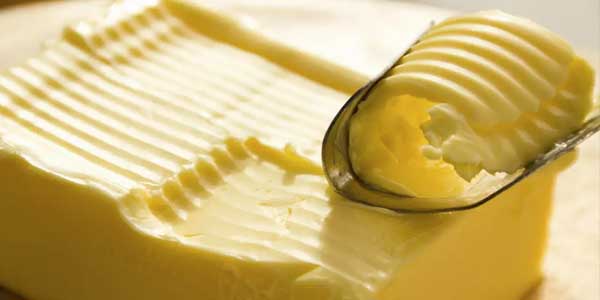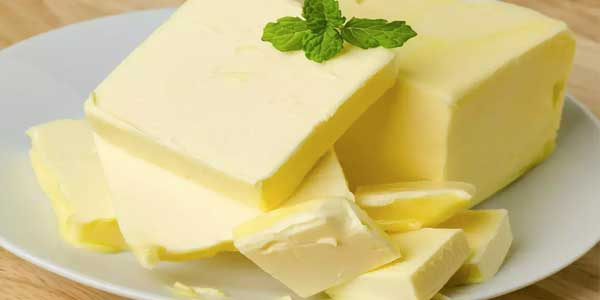Introduction
Butter, also known as makkhan, is a versatile and delicious cooking ingredient that has been used for centuries in various cuisines around the world. It is made from the fat and cream of milk, providing a rich and creamy texture to dishes. In addition to its culinary uses, butter offers several health benefits and is a staple ingredient in many households. In this article, we will explore the qualities, origin, sources, applications, health benefits, use in cooking, how to use, and potential side effects of butter, providing you with a comprehensive understanding of this popular cooking ingredient.
I. Origin and Sources of Butter (Makkhan)
Butter has a long history that can be traced back thousands of years. Its exact origin is uncertain, but it is believed to have been discovered accidentally by early civilizations through the process of churning milk. Over time, different regions developed their own methods of making butter, resulting in a variety of flavors and textures.
Today, butter is produced globally, with major producers including the United States, India, European countries, New Zealand, and Australia. The production process typically involves separating the cream from milk and then churning it to create butter. The quality of butter can vary depending on factors such as the breed of cows, their diet, and the production methods used.
II. Qualities of Butter (Makkhan)
Butter is prized for its unique qualities that make it an excellent cooking ingredient. The main characteristics of butter include its rich and creamy texture, its ability to add flavor and richness to dishes, and its versatility in various cooking techniques. The fat content of butter contributes to its smoothness and makes it ideal for baking, sautéing, frying, and spreading.
Different types of butter are available in the market, including salted and unsalted varieties. Salted butter has a slightly longer shelf life due to the presence of salt, while unsalted butter allows for better control of the salt content in recipes.

III. Culinary Uses and Applications of Butter (Makkhan)
Butter is a staple ingredient in both savory and sweet dishes, adding depth, richness, and flavor. Its uses are diverse and include:
- Baking: Butter is a key ingredient in cakes, cookies, pastries, and bread. It provides moisture, tenderness, and flavor to baked goods.
- Cooking: Butter is widely used for sautéing vegetables, meats, and seafood, adding a delicious nutty taste to the dish. It can also be used for frying and pan-searing.
- Sauces and Gravies: Butter forms the base of many classic sauces and gravies, such as hollandaise, béchamel, and roux-based sauces. It helps to create a smooth and velvety texture.
- Spreads: Butter is a popular choice for spreading on bread, toast, and bagels. It can be enjoyed on its own or combined with other ingredients like herbs, garlic, or honey for flavored spreads.
- Frostings and Icings: Butter is a crucial ingredient in creamy frostings and icings, adding richness and stability.
- Garnishing: A pat of butter on top of a steak or a hot-off-the-grill corn cob can enhance the flavors and presentation of the dish.
IV. Health Benefits of Butter (Makkhan)
Contrary to popular belief, butter does offer some health benefits when consumed in moderation as part of a balanced diet. Here are some of the potential health benefits associated with butter:
- Good Source of Vitamins: Butter contains essential fat-soluble vitamins such as A, D, E, and K. These vitamins play a vital role in maintaining healthy skin, supporting bone health, promoting immune function, and aiding in blood clotting.
- High in Healthy Fats: While butter is high in saturated fats, it also contains monounsaturated and polyunsaturated fats, which are considered healthier fats. These fats help in maintaining healthy cholesterol levels and provide energy to the body.
- Conjugated Linoleic Acid (CLA): Butter from grass-fed cows is a rich source of conjugated linoleic acid, a type of fatty acid with potential anti-cancer properties and beneficial effects on body composition.
- Rich in Antioxidants: Butter contains antioxidants such as beta-carotene and vitamin E, which help protect the body against oxidative stress and inflammation.
- Nutrient Absorption: The fat content in butter aids in the absorption of fat-soluble vitamins and other nutrients present in the foods consumed with butter.
It is important to note that the health benefits of butter can vary depending on factors such as the quality of butter, the overall diet, and individual health conditions. Moderation is key, and it is always advisable to consult a healthcare professional for personalized advice.

V. Use of Butter (Makkhan) in Cooking
Butter is a versatile ingredient that can be used in various cooking methods. Here are some popular techniques for using butter in cooking:
- Sautéing: Butter is an excellent choice for sautéing vegetables, meats, and seafood. Its rich flavor adds depth to the dish.
- Baking: Butter is a staple ingredient in baking. It adds moisture, richness, and flavor to cakes, cookies, pastries, and bread.
- Pan-Frying: Butter can be used for pan-frying foods, creating a flavorful crust and enhancing the overall taste.
- Roasting: When roasting meats or vegetables, adding butter helps to achieve a golden brown color and enhances the natural flavors.
- Finishing Touch: Adding a knob of butter at the end of cooking can add a silky texture and a glossy finish to sauces and gravies.
VI. How to Use Butter (Makkhan)
Using butter in cooking is fairly straightforward. Here are some general tips on how to use butter effectively:
- Softening Butter: If a recipe calls for softened butter, leave it at room temperature for a short while or microwave it on low power for a few seconds until it becomes soft but not melted.
- Measuring Butter: When measuring butter, use a scale or refer to the markings on the packaging. Butter is commonly sold in sticks or blocks, with measurements indicated on the packaging.
- Clarified Butter: Clarified butter is the result of melting butter and removing the milk solids. It has a higher smoke point, making it suitable for high-heat cooking methods like searing or deep-frying.
- Brown Butter: Brown butter is made by cooking butter until the milk solids turn brown, resulting in a nutty aroma and flavor. It can be used as a sauce or as an ingredient in desserts.
- Beurre Manié: Beurre manié is a mixture of butter and flour used as a thickening agent for sauces and gravies. It is made by kneading equal parts of soft butter and flour together.

VII. Side Effects and Moderation
While butter can be enjoyed in moderation as part of a balanced diet, it is important to be mindful of its high saturated fat content. Excessive consumption of saturated fats can contribute to an increased risk of cardiovascular diseases and other health issues. Some individuals may also be intolerant to dairy products, including butter, due to lactose or milk protein allergies.
It is advisable to consume butter in moderation and opt for healthier alternatives when possible, such as olive oil or plant-based spreads. Individuals with specific dietary concerns or health conditions should consult with a healthcare professional or registered dietitian for personalized advice.
Conclusion
Butter, or makkhan, is a beloved cooking ingredient known for its rich flavor, creamy texture, and versatility in the kitchen. It has a long history and is produced worldwide, adding depth and richness to various cuisines. Alongside its culinary applications, butter offers several health benefits when consumed in moderation, such as being a source of essential vitamins, healthy fats, and antioxidants.
From baking to sautéing, butter can be used in a variety of cooking methods to enhance flavors and textures. It is important to use butter in moderation and be aware of its high saturated fat content, considering healthier alternatives when appropriate. By understanding the qualities, origin, sources, applications, health benefits, use in cooking, how to use, and potential side effects of butter, you can make informed choices when incorporating this delicious ingredient into your culinary endeavors. Enjoy the richness and versatility of butter while maintaining a balanced and healthy lifestyle.